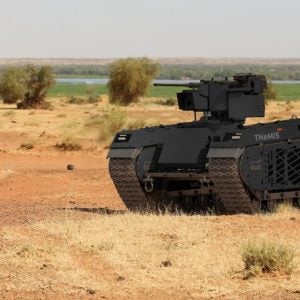Blast Trousers to Teach Treating Groin Wounds
When noise from the explosion finally subsided, a Marine’s agonized cries pierced the dusty air. A corpsman sprinted to his side but was taken aback by what he saw.
Shrapnel had torn into the infantryman’s groin, obliterating his genitals. Blood spurted from the gaping wound. The injury was so deep, so catastrophic, the medic was having trouble making sense of what lay before him.
"Stop the bleeding," he thought. "Find the femoral artery."
Massive bleeding is the leading cause of death among troops in combat. Now, a San Diego company has introduced a training device for corpsmen that may help save lives.
Designed and built by Strategic Operations Inc., the device, dubbed "Blast Trousers," is worn by a participant in a medical training exercise. It replicates groin-area injuries — including damage to the femoral artery — due to roadside bombs. First-responders learn how to stop the severe bleeding during their predeployment combat trauma training courses.
Typically, pressure dressings and blood-clotting agents are applied, and attempts are made to clamp the artery, but that’s not easy because it retracts into the groin area, said Kit Lavell, executive vice president of Strategic Operations. Clamping it requires putting a hand into the cavity to grab the artery.
With the Blast Trousers, corpsmen and Marines with 1st Marine Division out of Camp Pendleton are getting a feel — literally — for the types of wounds they may encounter on the battlefield. The device, formally known as Inguinal Bleed Trousers, replicates organs, including skin, that can be cut, clamped and sutured. For training, it is made with a severe wound to the groin area. A vessel in the cavity replicates the femoral artery, and fake blood is pumped at similar pressures as in a human body.
Instructors say many corpsmen and medics, who haven’t put in time at trauma centers or emergency rooms, haven’t seen that injury until they get to combat.
That’s what former Navy Hospital Corpsman 2nd Class Greg Figueroa realized when he deployed to Iraq.
"Nobody ever gave me an inguinal stent. We were taught tourniquets," said Figueroa, an instructor with Strategic Operations, who did an Iraq tour with 2nd Battalion, 1st Marines. "Nobody had trained me that if you have an inguinal bleed, this is what you do."
Trauma training using the device "will help a lot," Figueroa said. "If you could feel (the artery) and grab it, you could pinch it off."
.


